Is it time to upgrade or replace your rear derailleur? Do you sit awake at night worrying about what tooth capacity is? Have you ever wanted to know absolutely everything there is to know about buying a rear derailleur or wondered which rear derailleur you need. If so, you’ve come to the right place.
While we don’t recommend you break out this hot derailleur chat at your next party, this is essential information if you’re looking to buy or upgrade a rear derailleur.
In this guide, we’ll take you through rear derailleur compatibility for both mechanical and electronic groupsets. We also explain key rear derailleur specs and tooth capacity.
This article only covers rear derailleurs. We have a separate guide dedicated to front derailleurs.
Which brand of derailleur should I buy?

Shimano, SRAM and Campagnolo are the three main players in the drivetrain market, although Campagnolo only markets groupsets for road and gravel, not mountain bikes.
Microshift, Box, Rotor, FSA and others also make groupset components, but it would be beyond the scope of this article to cover all of these.
As a general rule of thumb, it’s best not to mix and match drivetrain components from different brands. While cranksets, chains and cassettes are mostly inter-compatible between brands, generally speaking, shifters and derailleurs aren’t.
This is because Shimano, SRAM and Campagnolo all use different cable-pull ratios for mechanical groupsets (and different electronic protocols for electronic groupsets, which we’ll discuss later).
Cable-pull ratio is the amount a derailleur moves for every millimetre of cable pulled through by the shifter. Mixing parts with different cable-pull ratios will result in very poor shifting.
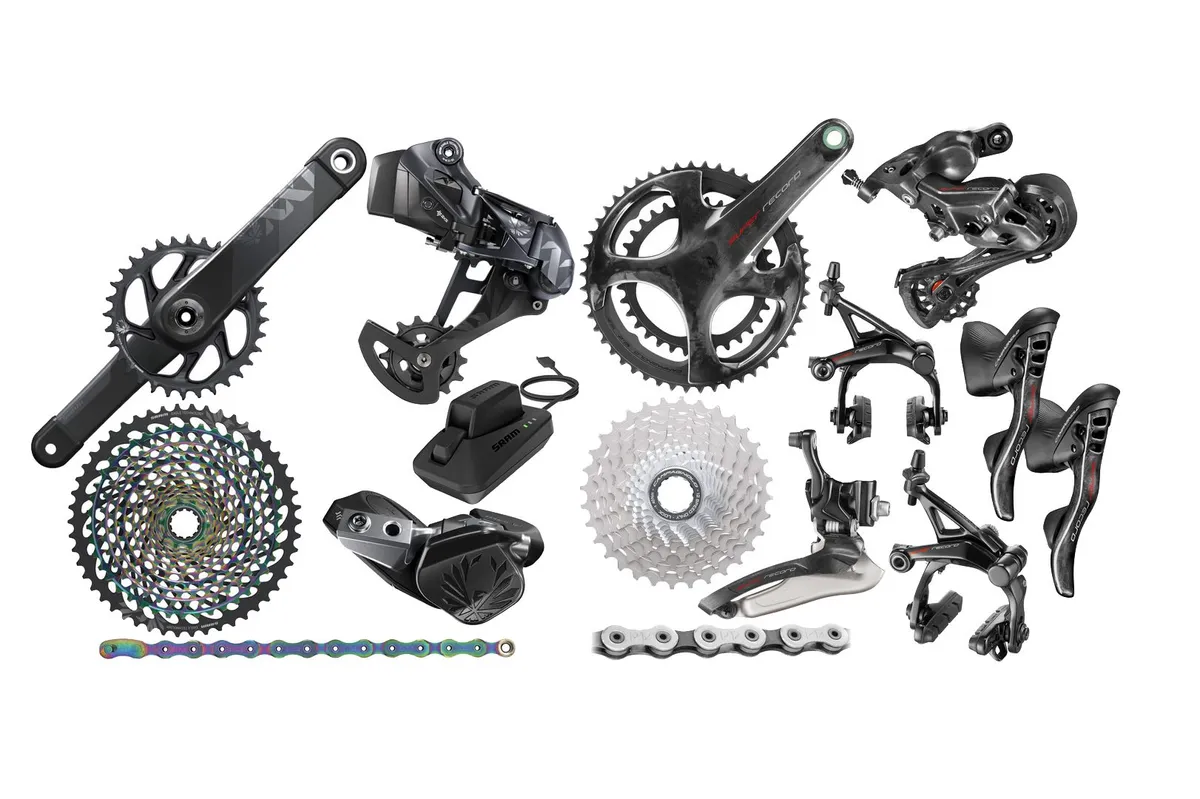
However, it’s more complicated than that.
Shimano mountain bike groupsets and road groupsets use different cable-pull ratios, although SRAM’s are the same for both.
Furthermore, cable-pull ratios also differ between different ‘speed’ groupsets. For example, an 11-speed Shimano road bike groupset has a different cable ratio from a 10-speed Shimano road bike groupset.
There may even be pull-ratio differences between generations of groupsets with the same number of gears.
There are, of course, exceptions – many Sramshimpagnolo mash-ups that can be cajoled into working – and several third-party component makers who sell parts to help you make them work together.
However, it’s usually easiest to stick to the same brand as your shifters when buying a rear derailleur.
How many gears does my bike have?
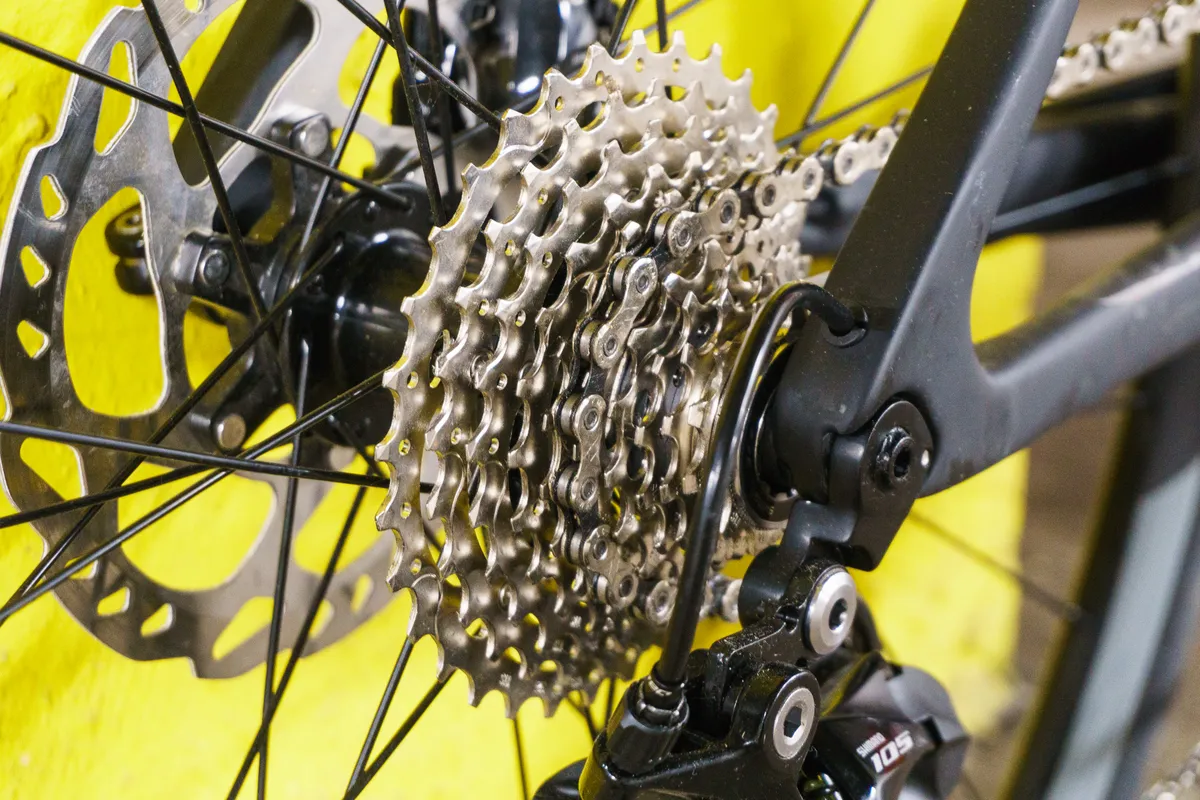
Once you’ve settled on the brand, you must now determine the number of gears your drivetrain has.
If you are replacing an existing derailleur on a bike, simply count the number of cogs on your cassette and you’re good to go.
If your drivetrain’s speed is an unknown quantity, you can count the number of steps your shifter runs through and add ‘one’ to determine the number of gears your drivetrain has.
Derailleur compatibility explained
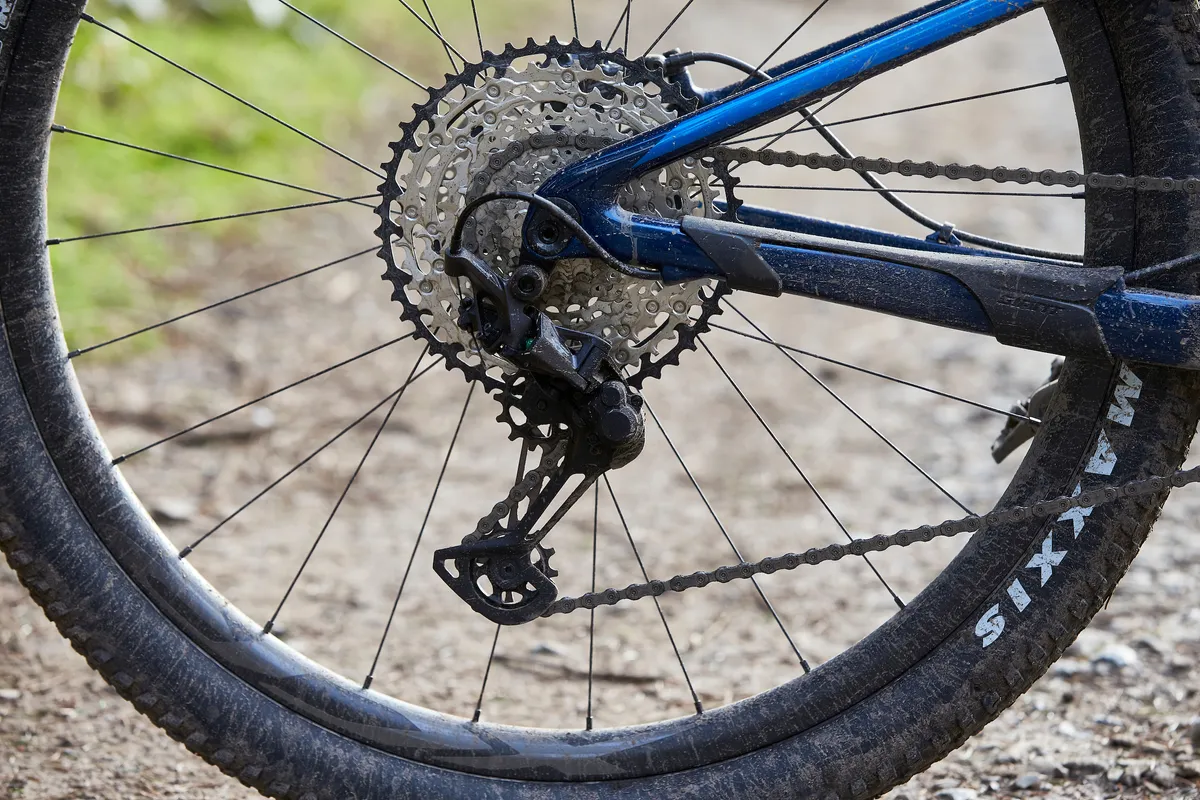
As a general rule of thumb, you shouldn’t mix and match groupset parts of different generations or mix mountain bike and road components, but there are a few exceptions. Below, we've broken down compatibility by manufacturer.
1x and 2x derailleurs
A further complexity is added by the availability of derailleurs that are designed to work with single-chainring (1x) and two-chainring (2x) cranksets. You’ll find both as options for Shimano GRX gravel groupsets, almost all SRAM road groupsets and some SRAM MTB groupsets.
Although in a few cases there’s some overlap, in general you’ll need either a 1x derailleur to work with a wider-range 1x cassette or a 2x derailleur to work with a narrower-range 2x cassette.
The following information is applicable to both derailleurs and shifters.
Shimano derailleur compatibility explained
Shimano road and gravel bike mechanical derailleur compatibility

- 12-speed Shimano 105 is compatible with 2x12-speed Shimano GRX RX820 – so you could run Shimano GRX RX820 shifters with a Shimano 105 R8100 rear derailleur.
- All 11-speed Shimano road components are inter-compatible – you could use a Dura-Ace R9100 derailleur with a pair of 105 R7000 shifters. This is also true of the brand’s 11-speed GRX components
- 10-speed road components (except 10-speed GRX and Tiagra 4700) are inter-compatible. You could, for example, use an Ultegra 6700 derailleur with 105 5700 shifters.
- Most* 8- and 9-speed Shimano mountain bike and road kit is inter-compatible because they both use the same cable-pull ratio. This means you can use an 8- or 9-speed mountain bike derailleur with road shifters, or vice versa
*The only exception for 9-speed groupsets is pre-1997 Dura-Ace gearing, which won’t play nicely with anything because it uses a totally different cable-pull ratio
10-speed Tiagra 4700 (and the associated RS405 hydraulic shifters) and GRX400 gravel derailleurs also use the same cable-pull ratio as 11-speed road components. This means you could, for example, use an 11-speed derailleur with 10-speed Tiagra 4700 shifters.
Shimano mountain bike mechanical derailleur compatibility
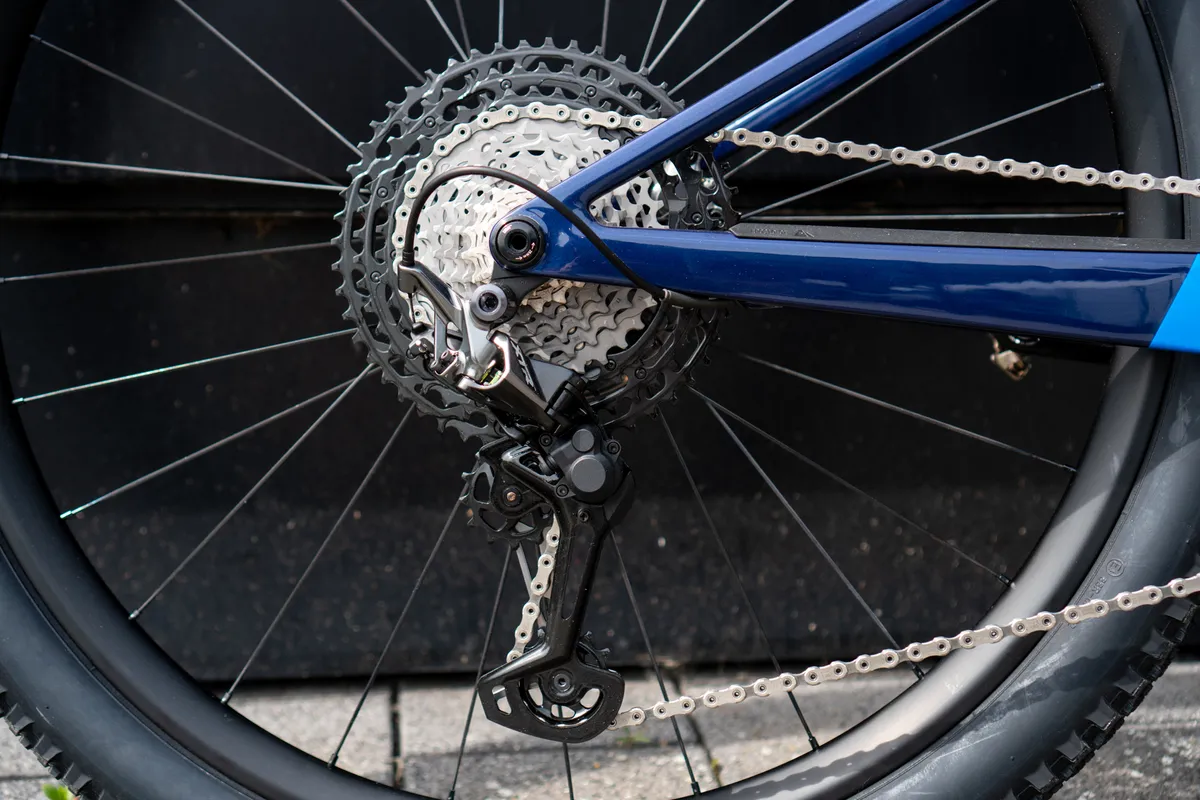
- All 12-speed Shimano mountain bike components are inter-compatible – you could, for example, use an SLX M7120 derailleur with an XTR M9100 trigger shifter
- This is also the case with Shimano’s 11-speed mountain bike components – for example, you could use an XTR M9000 derailleur with a pair of SLX M7000 shifters
- All 10-speed Shimano mountain bike components are inter-compatible
- Current 9-speed Shimano mountain bike components are compatible with older 9-speed road and mountain bike components, excluding the aforementioned exception
10-, 11- and 12-speed Shimano road/gravel and mountain bike components are not inter-compatible with each other. This is because they use different cable-pull ratios.
For example, you couldn’t use a set of road shifters with a mountain bike rear derailleur.
Cable-pull converters from brands such as Ratio Components, JTek and Wolf Tooth Components exist and will enable you to mess about with your drivetrain configuration to your heart’s content. Microshift also produces drop-bar shifters that will work with Shimano mountain bike derailleurs.
Recognising that having multiple incompatible derailleur systems isn't ideal, either for the rider or the bike shop that has to stock a whole range of spares, Shimano took steps to rationalise things in the form of Cues.
Cues replaced all of Shimano's 9, 10 and 11-speed components with a single system, with the same cable-pull ratios for each. It was introduced for flat-bar bikes, but as of September 2024 it looks as if drop-bar Cues components are finally in the works.
Shimano electronic derailleur compatibility explained

- All 12-speed Shimano Di2 road and gravel components are compatible with one another
- All 11-speed Shimano Di2 road, gravel and mountain bike Di2 components are inter-compatible – you could, for example, use an XT M8050 rear derailleur with a pair of Ultegra R8070 shifters
- Shimano’s XT Di2 M8150 12-speed rear derailleurs are designed for electric mountain bikes and are not compatible with non-assisted bikes
- The older Dura-Ace 7970 and Ultegra 6770 Di2 10-speed components are not compatible with each other. This is because they use different wires, with the Ultegra variant using the SD50 type that would go on to be used on 11-speed
Apart from first-generation Dura-Ace Di2, which uses a different wiring harness, the second (11-speed) generations are inter-compatible, across road, gravel and mountain bike groupsets because they all use the SD50 wires and share the same electronics.
While the derailleurs will work, chainlines (how far the chainrings, derailleurs and cassette are from the bike's midline) differ between GRX, Shimano’s road groupsets and its mountain bike groupsets.
The current 12-speed generation of Shimano electronic groupsets has inter-compatible wiring and electronics, and uses the newer SD300 wire variant.
So, if you smash up your £700 Dura-Ace Di2 R9250 rear derailleur, you can replace it with a £380 Ultegra Di2 R8150 derailleur, or a £275 105 Di2 R7150 one.
Because Shimano revised the wiring on its latest 12-speed road groupsets, they are not backwards-compatible with its 11-speed counterparts. The only exception is the 11-speed Di2 time trial shifters, which need to be wired using an EW-AD305 adaptor.
SRAM derailleur compatibility explained
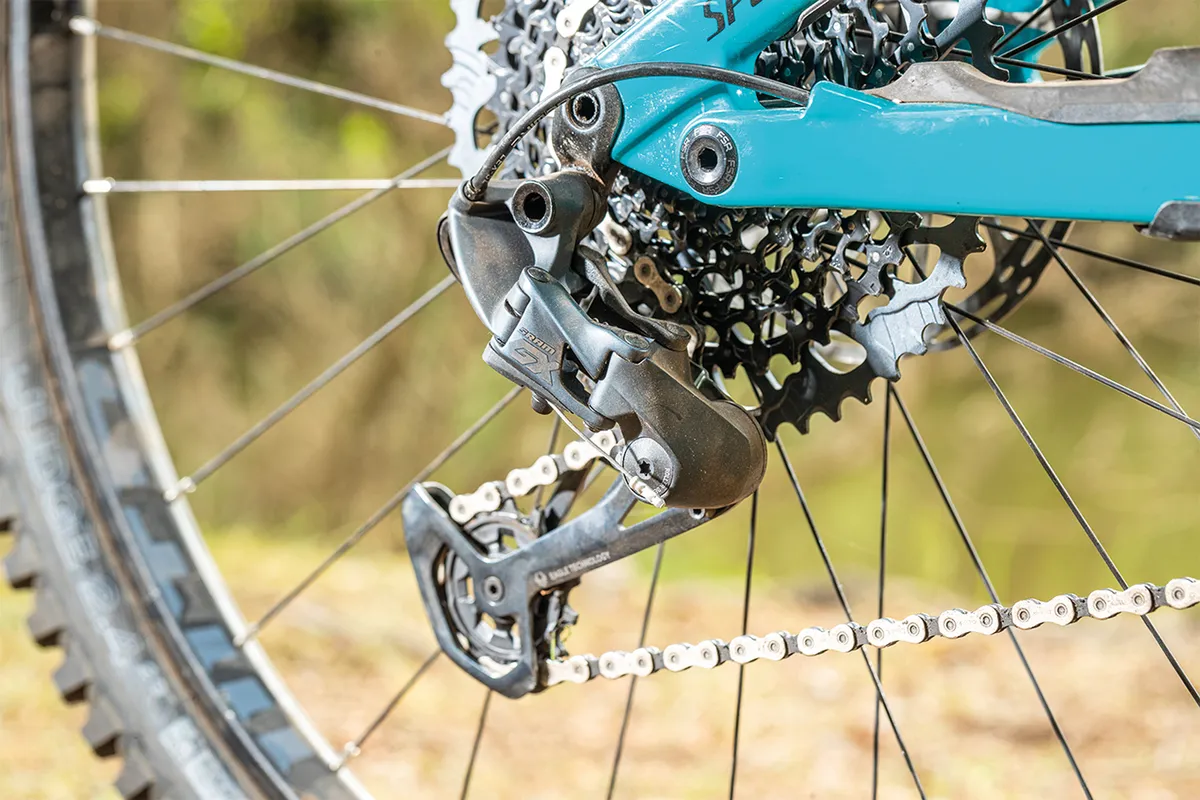
The situation is a little clearer with SRAM and we’ve summarised the main points below.
SRAM road and gravel mechanical derailleur compatibility
- 12-speed SRAM Apex Eagle is currently the only mechanical SRAM road/gravel offering and is cross-compatible with SRAM Eagle mechanical MTB components
- 10- and 11-speed SRAM road components are inter-compatible – meaning you could run a 10-speed SRAM Red rear derailleur with a pair of SRAM 22 shifters
- 10-speed SRAM components are inter-compatible, regardless of whether they are road or mountain bike parts – for example, you could run road shifters with a mountain bike rear derailleur
- 7-, 8- and 9-speed SRAM components are all inter-compatible, regardless of whether they are road or mountain bike parts
SRAM has also been at the forefront of the push to ever-wider gear ranges and its newer rear derailleurs are designed to handle wider-range cassettes. So it’s important to consider whether a replacement derailleur can handle all the cassette sprocket sizes you might want to run.
Despite visual similarities, SRAM’s Force 1 11-speed groupsets are not compatible with 11-speed mountain bike components because they use different cable-pull ratios (although they will work with 10-speed road shifters).
SRAM mountain bike derailleur compatibility

- SRAM’s latest 12-speed Eagle drivetrains are all cross-compatible with one another and with SRAM Apex Eagle. They’re also compatible with SRAM Transmission (T-type) components
- 10- and 11-speed SRAM mountain bike components are not inter-compatible
- 10-speed SRAM components are inter-compatible, regardless of whether they are road or mountain bike parts – for example, you could run road shifters with a mountain bike rear derailleur
- 7-, 8- and 9-speed SRAM components are all inter-compatible, regardless of whether they are road or mountain bike parts
SRAM electronic derailleur compatibility

- 12-speed SRAM components are not backwards-compatible with 11-speed. The exception is eTap batteries, which work with all 12-speed AXS and 11-speed components
- SRAM’s current 12-speed AXS rear derailleurs are all compatible across road, gravel and mountain biking. For example, you can run an Eagle rear derailleur on a road or gravel bike. If you’re doing this, you’ll need to run a compatible chain (you cannot run a road FlatTop chain with an Eagle rear derailleur), chainring and cassette
SRAM’s 12-speed AXS road and MTB groupsets can be used together, setting up the option for ‘mullet builds’, which pair up road shifters with an Eagle AXS rear derailleur and a 10-50t or 10-52t cassette, for an ultra-wide gravel bike build.
However, SRAM’s Force AXS Wide and Rival AXS Wide groupsets mean you may not have to create your own mullet builds. Bridging the gap between road-going AXS groupsets and mullet builds, the groupsets offer a lower bottom gear for road and a good range for gravel riding by dint of smaller chainrings. They work with the standard Force and Rival AXS 1x (XPLR) or 2x derailleurs.
In previous-generation Red/Force AXS, there was a specific rear derailleur designed to handle 10-36-tooth cassettes, with another version rated up to 33-tooth cassettes. The second generation of both derailleurs (and Rival AXS) will support 10-36-tooth in 2x.
Force and Rival XPLR AXS 1x derailleurs will handle a 10-36t or 10-44t cassette.
The older 11-speed Red eTap shifters and rear derailleur aren’t compatible with 12-speed eTap AXS.
Campagnolo mechanical derailleur compatibility explained
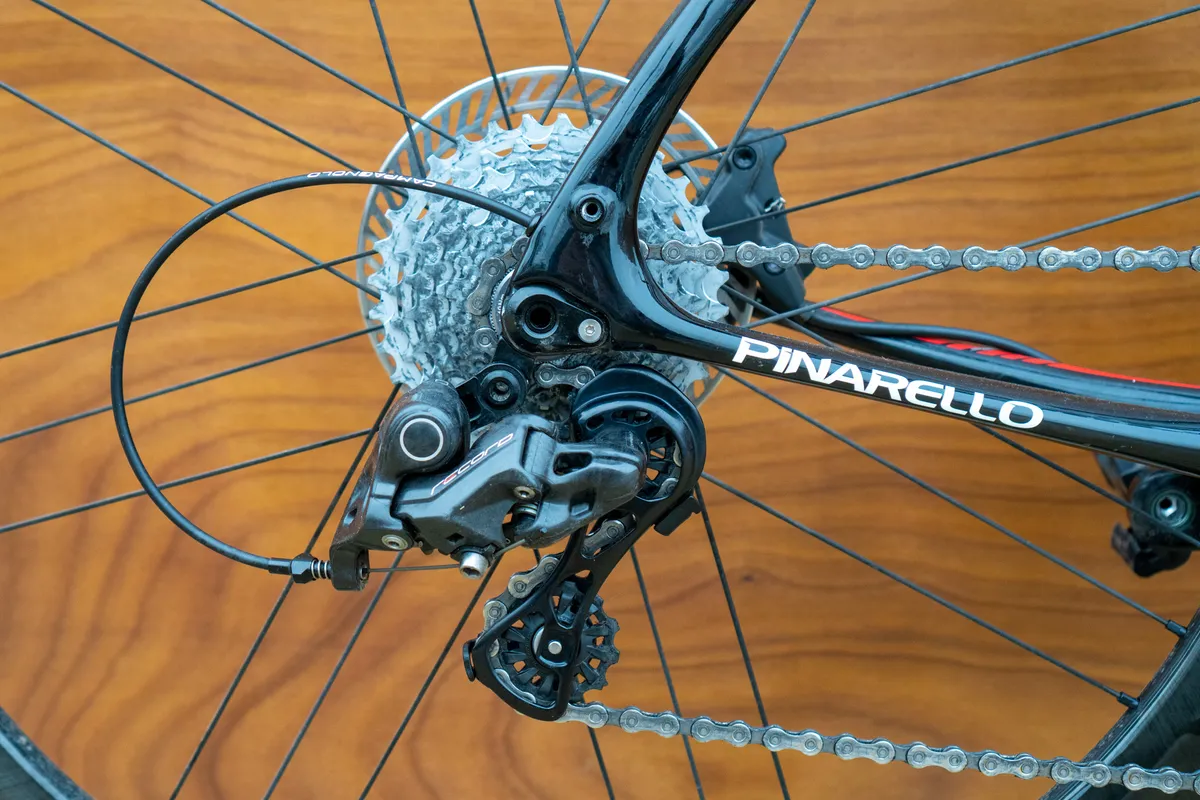
Campagnolo road and gravel derailleur compatibility
In un-typically Campagnolo fashion, cross-compatibility between different generations of groupsets is fairly easy to understand because there are no mountain bike groupsets (yes, we know it made Euclid and a host of other off-road bits way back) to contend with.
But, as is typical of Campag, there's the odd flourish of awkwardness.
- All 8- and 9-speed Campagnolo groupsets before mid-2001 used the same pull ratio and are compatible with each other. This generation of parts is often referred to as ‘Campy old’
- After mid-2001, Campagnolo started using a revised pull ratio for its newer 9-speed kit. These and all 10- and 11-speed groupsets from this period are inter-compatible – for example, you could run an Athena derailleur with Record shifters
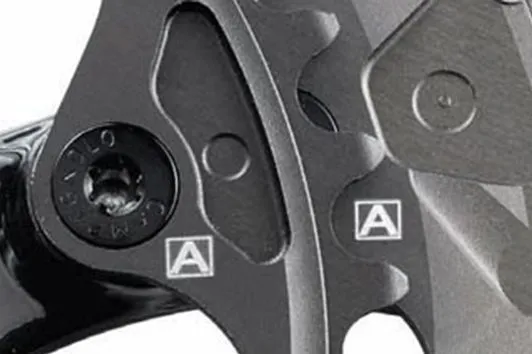
But now things get more complicated (or simple, depending on which way you look at it) with slight tweaks to all of Campagnolo’s groupsets resulting in reduced inter-compatibility between groupsets.
In short, these changes have affected most of its drivetrain parts (different-width bottom bracket cups result in altered chainlines, different cable-pull ratios, and so on).
Compatible parts are now marked by a letter surrounded by a square box – simply put, if all of your components have the same letter stamped on them, they’ll work together.
Campagnolo provides a much more thorough description of the changes and we highly recommend you read through this guide carefully before committing to any new parts from the Italian marque.
There are also differences in the pull ratios used between different groupsets: the Ergopower shifters used by mechanical Super Record, Record and Chorus 11-speed are not compatible with Potenza, which itself is incompatible with both Ergopower and Centaur Power-Shift systems.
However, things get much easier with its latest 12-speed road groupsets. You can mix and match components between Chorus, Record and Super-Record.
The brand’s Ekar and Ekar GT gravel groupsets are currently its only 13-speed offerings and you can’t run them with the brand’s 12-speed components.
Campagnolo road electronic derailleur compatibility
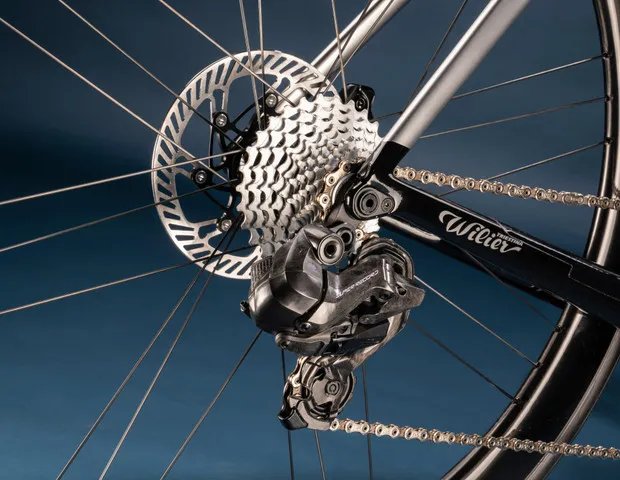
The top dog Campagnolo Super Record WLR groupset is a system that stands alone. It uses a wireless protocol to communicate between its parts.
Campagnolo’s previous-generation Super Record EPS electronic groupset is also 12-speed. Again, it’s a system unto itself, with its own electronics, and uses wires to communicate between the shifters and the rear derailleur.
Plus, parts for the disc brake and rim brake systems don’t work together properly. There’s also no backward compatibility with older 11-speed EPS or forward compatibility to upgrade from 11-speed to 12-speed.
The good news is there’s some reverse compatibility between version-three 11-speed EPS components and older generations.
What cage-length derailleur should I buy?
Now we’ve determined the speed, brand and compatibility of your derailleur, you must work out the cage length your drivetrain requires: long, short or medium.
The length of your derailleur’s cage defines the range of gears you can have on your bike – the longer the cage, the more slack in the chain the derailleur can take up.
We have included a quick guide below, but if you’re in any doubt read on to see how we came to these conclusions.
Derailleur cage length quick guide
There are two common situations where there may be a large range, or spread, of gears on your bike – when using a super-wide range cassette (eg, 10-42t or larger) or when there is a large difference between chainring sizes (eg, when using a triple chainset).
In these circumstances, you will require a long-cage derailleur, or one designed specifically to work with a 1x groupset.
If you're running a 1x drivetrain with a regular-sized cassette (ie, 11-36t or smaller) or some 2x mountain bike drivetrains with a similarly sized cassette, you may want to use a medium-cage derailleur.
If you have a traditional road double drivetrain with a regular cassette (ie, 11-28t or smaller), you can use a short-cage derailleur.
In practice, both Shimano and SRAM have rationalised their latest 2x12 rear derailleurs for road use so there’s only a single cage length option available.
Most 1x drivetrains offer you a single derailleur cage length too and are designed to work with a limited range of cassettes, or in some cases, such as SRAM Red XPLR 13-speed, only a single cassette.
The only recent exception is 12-speed Shimano GRX 1x, where the RX822-GS and the RX822-SGS use the same derailleur body but a different-length cage. This enables the former to handle a 10-45t cassette, but the latter to fit a 10-51t. You can swap the cage to convert between the two.
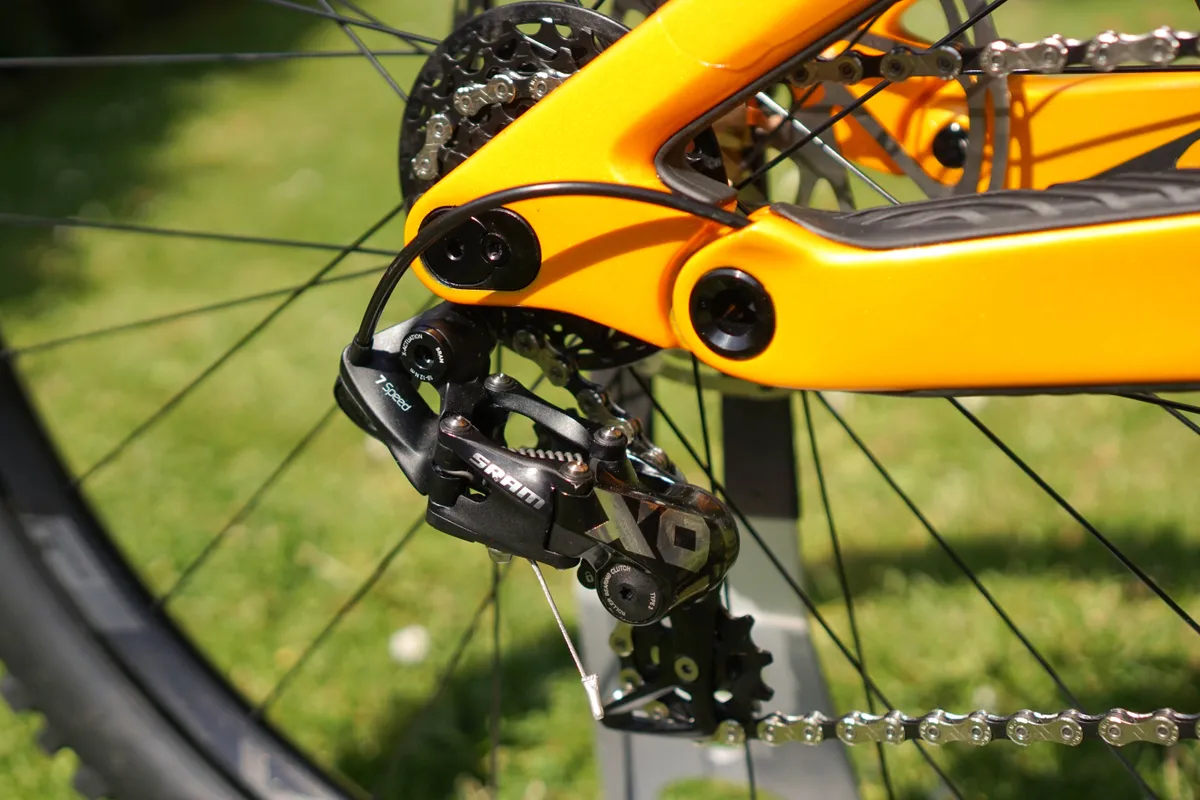
Some downhill-specific drivetrains also use short-cage derailleurs and cassettes with fewer sprockets (eg, Shimano Saint and SRAM X01 DH).
You will notice there are lots of ifs and buts in this guide – there are too many variables to give a conclusive answer in any situation.
Derailleur tooth capacity explained
To get a definitive answer, you must refer to the tooth capacity of your derailleur. You can work out the required tooth capacity of your bike by calculating the following:
How to calculate tooth capacity
- (largest cog - smallest cog) + (largest chainring - smallest chainring) = required capacity
For a modern, double-chainring road bike drivetrain, we would have something like:
- (32 - 11) + (52 - 36) = 37t capacity
For the sake of example, let’s assume you're looking at a Shimano 11-speed road derailleur here.
The total capacity of an SS (short cage) Shimano derailleur is 35t, and 39t for a GS (medium cage) derailleur. As such, in this circumstance, you would require a medium-cage derailleur.
It bears mentioning that the quoted capacity of derailleurs tends to be pretty conservative. In practical terms, you could almost certainly get away with using a short-length cage derailleur in this circumstance, so long as you avoided extreme (e.g. big and big) gear combinations. Shimano, however, wouldn’t condone this.
Clutch derailleurs explained

Regular rear derailleurs rely solely on the tension provided by the main pivot to keep the chain in place.
A clutch derailleur essentially increases the resistance this pivot provides – either through a spring-loaded clutch or more complex hydraulic systems, as seen on SRAM AXS – resisting fore and aft movement of the derailleur cage, and making for a far quieter and more reliable drivetrain.
Although SRAM, Shimano and Campagnolo’s interpretations of a clutch derailleur differ slightly, they're all intended to achieve the same thing.
Almost all modern mountain bike derailleurs (and Shimano’s GRX gravel groupsets, the older 11-speed Ultegra RX mechanical rear derailleur, Campagnolo Ekar, SRAM’s single-ring road groupsets and eTap AXS 12-speed road rear derailleurs) include a clutch mechanism.
With clutch derailleurs offering a quieter and more reliable drivetrain, there are few compelling reasons not to buy a clutch derailleur for a mountain bike.
What do I get with a more expensive derailleur?
Now that we’ve gone through the tortuous process of working out exactly what will work with your drivetrain, you have the fun of deciding which price point to go for.
But what should you look for in a rear derailleur? To keep the topic simple, we’ve broken things down into weight, longevity and finish.
Weight
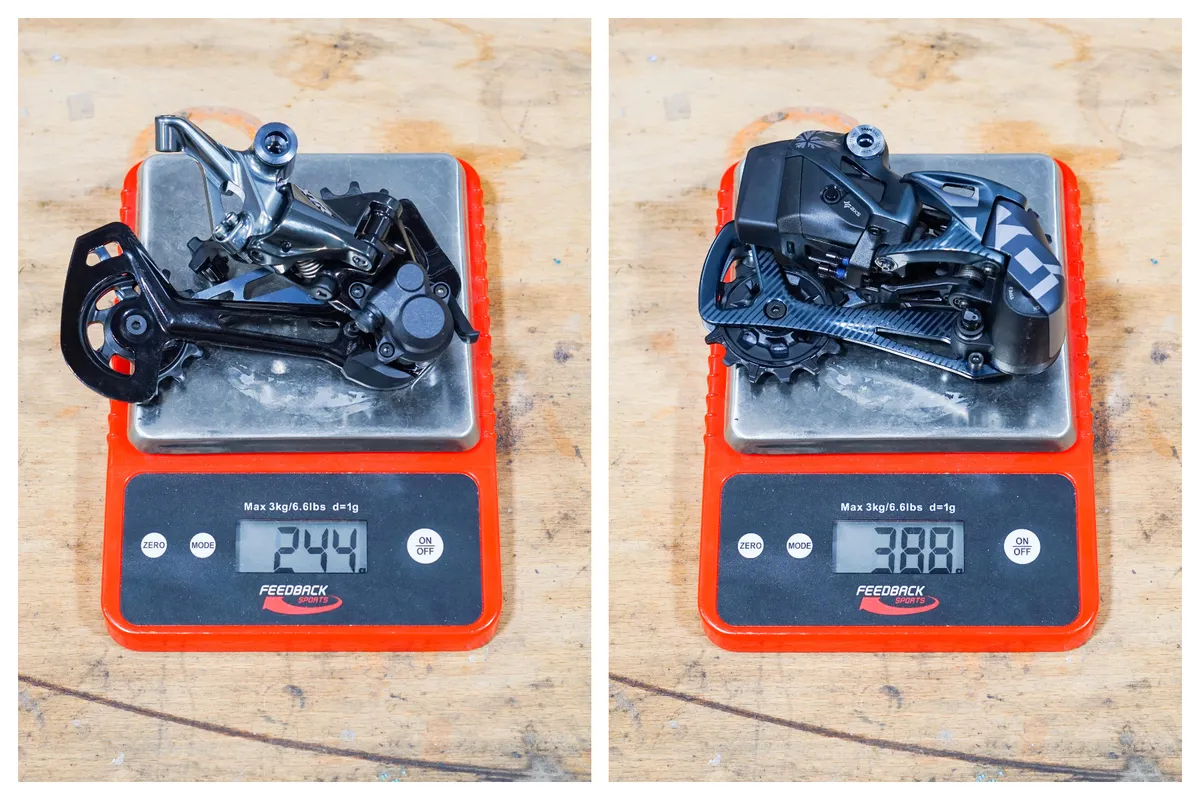
A more expensive derailleur will usually weigh less than a cheaper one.
This is achieved by using more exotic materials (eg, carbon cages, titanium pivots) in the derailleur's construction and machining away more excess material.
If weight is the utmost concern to you, you’ll have to shell out some more cash.
Longevity
More expensive derailleurs often use harder-wearing components and are built to closer tolerances, so will last longer than cheaper models.
This is particularly apparent with jockey wheels, where cheaper derailleurs will often spin on basic steel bushings.
These don’t last nearly as long as higher-end alternatives that spin on cartridge bearings or ceramic bushings.
Finish

Since everything up to this point has been tech-heavy, we can afford to be superficial for a moment.
Higher-end derailleurs can be jewel-like in their quality, featuring all sorts of beautiful, polished panels and nice anodising.
While people will tell you never to judge a book by its cover, bike nerds have a habit of judging a bike by its rear derailleur. If you want to be the coolest person in the bunch, we won’t judge if you splash out on some shiny loveliness.
